Talk with our local travel specialist who can help organize your trip.
Langtang Trek - A Complete Guide
Langtang Trek is a favorite short trek destination in the Langtang valley located close to Kathmandu city, in the central Himalayas. The 11 days trip takes you across the Langtang National Park through some low and high elevation terrains with natural views and integration of rich Tamang community culture. Bordering closely to Tibet in the north, it offers expansive views of Nepali and Tibetan 7,000m/22,965ft peaks, among which Langtang Lirung is the highest at 7,234m/23,734ft. The deciduous forest lines surrounded by the Langtang mountain range are a beautiful display of nature.
The third most visited trekking destination in Nepal besides Everest and Annapurna, the Langtang Trek is best for regular as well as novice trekkers. It requires some level of preparation and practice as a moderately difficult trek as it reaches the highest elevation of 4984m in the glacial terrain. If you are opting for a rewarding and peaceful trekking experience in a less crowded region, then Langtang trek is for you.
Before heading for the Langtang trek, go through the below-mentioned Langtang trek complete guide to get insight on the best itinerary, beat season, cost of travel, permits, difficulty level, preparation and more. The guide has been carefully crafted by our experts so that trekkers are aware of what to expect and how to prepare for the most sought-after Langtang Valley Trek.
Trip Facts
|
Trip Days |
11 Days |
|
Trekking Days |
7 Days |
|
Highest point |
4984m/16351ft at Tserko Ri peak |
|
Difficulty level |
Moderate to Difficult |
|
Permits |
TIMS & Langtang National Park Entry Permit |
|
Accommodation |
Tea-Houses |
|
Best Season |
Spring (March to May) and Autumn (Mid-September to November) |
|
Average Walking |
5-6 Hours |
Table of Content
- Highlights Of Langtang Trek
- TIMS And Langtang National Park Entry Permit
- Langtang Trek Itinerary
- Langtang Trek Map
- Where Is Langtang Valley Located?
- How To Get In Langtang Valley?
- Langtang Trek Difficulty And Preparation
- Altitude Sickness: How To Avoid Getting Sick?
- Guided Tour Vs Independent Trek
- Best Season To Trek In Langtang Trek
- Travel Insurance For Langtang Trek
- Langtang Trek Cost
- Langtang Trek Packing List
- Langtang Trek Accommodation
- Food In The Langtang Trek
- Electricity And Internet Facility In Langtang Trek
- Guide And Porter For Langtang Trek
- Langtang After Earthquake
- Conclusion
Highlights Of Langtang Trek
- Unravel the unique flora ad fauna of Nepal's first Himalayan National Park and fourth protected area; Langtang National Park
- Get a chance to spot rare fauna like Red Panda amidst the bamboo lines and rhododendron trees in the forested trail
- Enjoy views of 7,000m/22,965ft peaks of the Langtang range like Langtang Lirung, Langtang Ri, Dorje Lakpa, Yala Peak, Loenpo Gang and more
- Explore the warm spirit and rich culture of the ethnic Tamang Community living in the villages of Langtang valley
- Visit the newly rebuilt houses and tea houses of Langtang Village which was badly hit by the 2015 earthquake
- Visit the oldest Buddhist monastery in Kyangjin Gompa and the renowned Cheese factory there
- Head to the viewpoint of Kyangjin Ri, the highest elevation of the trek at 4,984m/16,351ft for clear views of the Langtang range
TIMS And Langtang National Park Entry Permit
The Langtang trekking trail falls in the Langtang National Park area, a protected area that requires the Langtang National Park Entry permit to be shown at the checkpoint. Trekkers Information Management System (TIMS) card is another permit mandatory for most trekking regions in Nepal.
Following are the Langtang Trekking permit cost per person:
- Langtang National Park permit fee for foreigners: 3,000 NPR (Approx. USD 30) plus 13% VAT, For SAARC nationals: 1500 NPR (Approx. USD 15) plus 13% VAT
- TIMS permit: 1,000 NPR (Approx. USD 10)
Both the mandatory permits can be collected from the Nepal Tourism Board Office in Pradarshani Marg, Kathmandu, a 20-minute walk from Thamel. The office's opening hours from Sunday to Saturday are 9:00 AM to 4:00 PM (NT). If you cannot manage to obtain it from Kathmandu, you can also acquire it from the first and second checkpoint, on the way to Syabrubesi. Carry all the documents needed including your insurance policy number, information about your daily itinerary and route, a copy of your passport, and 2 passport-sized photos. If you are taking a package trip from a local agency, they will manage the permits.
These permits are non-transferable and non-refundable. For children under the age of 10 years, an entry fee is not required. Carry both the permits at all times and show them at the respective checkpoints when asked by the officials.
Langtang Trek Itinerary
|
Day 1: |
Arrival in Kathmandu (1,400m/4,593ft) |
|
Day 2: |
Drive from Kathmandu to Syabrubesi (1,500m/4,921ft) - 7-8 hours Drive |
|
Day 3: |
Trek to Lama Hotel (2,480m/8,136ft) - 7-8 hours |
|
Day 4: |
Trek to Mundu (3,543m/11,621ft) - 6-7 hours |
|
Day 5: |
Trek to Kyangjin Gompa (3,830m/12,566ft) - 2-3 hours |
|
Day 6: |
Acclimatization Day in Kyangjin Gompa : Hike to Tserko Ri (4,984m/16,352ft) - 7-8 hours |
|
Day 7: |
Trek to Lama Hotel (2,480m/8,136ft) - 6-7 hours |
|
Day 8: |
Trek to Thulo Syabru (2,210m/ 7,251ft) - 5-6 hours |
|
Day 9: |
Trek to Dhunche (1,960m/ 6,430ft) - 3-4 hours |
|
Day 10: |
Drive to Kathmandu (1,400m/ 4,593ft) - 5 to 6 hour drive |
|
Day 11: |
Final departure |
Langtang Trek is an 11 days trip in Nepal's Langtang valley, which is the closest trekking destination from Kathmandu city. It commences with a drive from Kathmandu to Syabrubesi which will be the starting point of the trek. The trekking trail takes you to Lama Hotel then heads to Langtang Village through a dense forest. From there take a short hike to Kyangjin Gompa village. You will take an acclimatization day in the mid of the trip and take a detour to Tserko Ri peak, the trek's highest vantage point. Head back to Lama Hotel then to Thulo Syabru, a slightly different route, then to Dhunche and drive back to Kathmandu.
Langtang Trek Map
Where to travel next?
Get help from our travel specialists for holiday ideas that matches your interests.
Where Is Langtang Valley Located?
Langtang Valley is situated in the north-central Rasuwa district of Nepal, just 51 km away from the north of Kathmandu. The valley borders Tibet in the north. Langtang valley spans east to west across the Langtang National Park and is dominated mostly by Langtang Lirung mountain amidst the wide Langtang range. The valley is fertilized by the lush Langtang River passing in between flowing towards Bhote Koshi River at the western end of the valley. The tributary above Dhunche forms an ancient trade route in the Himalayas between Ganesh and Langtang peaks to the Kerung border in Tibet.
Langtang encompasses many villages in the Himalayan region including the Kyangjin Gompa, Lama Hotel Langtang village, and more. Langtang village has been a famous stop for trekkers in many treks of the region.
How To Get In Langtang Valley?
Langtang from Kathmandu is located just 51 km away in aerial terms. However, Syabrubesi, the starting point of your trek is 115 km away from Kathmandu, by land travel route. You will be driving to Syabrubesi town for this trek, which takes about 7 to 8 hours from Kathmandu. Parts of the road are tarred while the other parts are gravely, so expect a bumpy ride.
There are three ways of getting to Langtang Valley; Syabrubesi, all by land; via local bus, jeeps, or private vehicle.
If you are opting for budget travel, then it is wise to choose a local bus that departs every day at 6 AM or 7 AM from Gongabu Bus Station in Kathmandu city. It can be crowded and typically is slower than other mediums. You can easily get the bus ticket on the morning of your travel and cost about USD 8 to 9, depending upon the bus's condition. You can buy snacks and water in between. They stop about 2 times for short breaks in between and once for lunch.
You can choose to travel by jeep on a sharing basis. The cost for sharing a jeep is around 10 USD per person. It is generally more comfortable and faster than a local bus.
For a more luxurious experience, you can hire a private vehicle for travel. The rental charges are generally very high in comparison to local and shared travel. The 4WD jeeps will come with a driver and can accommodate up to 5 people. You will reach a little faster than the local bus and travel peacefully and comfortably. If you happen to take a trekking package from a travel agency, then they generally arrange private vehicle hire for a group.
Langtang Trek Difficulty And Preparation
Langtang Trek Altitude Map
Langtang trek is considered to be a moderate to the difficulty level of trek. The trekking days are short but it reaches an elevation over 4,500m/14,763ft. Furthermore, Kyangjin Gompa's altitude of 3,830m/12,566ft is the maximum elevation where you will spend a night, where you may fall victim to altitude sickness. The duration is 7 trekking days where you will have to trek for about 6-7 hours on average per day. You might have to walk a little more than the average during some days, and during other days, you might have to walk a little less. The trail sees many ups and downs in the rugged terrain.
The trek is best for regular trekkers and is good for amateur trekkers, who are physically fit. You need to prepare yourself for the trek a couple of weeks before the trek. You can indulge in some exercise, yoga, swimming, cycling, hiking activities before the trek to stretch your muscles. As far as possible avoid smoking and drinking alcohol a few weeks before the trek and also during the trek. Smoking and drinking will reduce your stamina to walk through the testing terrain.
Altitude Sickness: How To Avoid Getting Sick?
Altitude Sickness is more common in Langtang Trek than Annapurna Base Camp Trek. This is because of the maximum altitude of 4,984m/16,351ft at Tserko Ri. There will be a sudden change in the elevation during the first few days of the trek of more than 1000m each day. Owing to thins, the body finds it difficult to accommodate the drop in oxygen level and atmospheric pressure as the air becomes thin in progressing elevation.
Due to this, you might fall victim to Altitude Sickness or Acute Mountain Sickness (AMS), which is the first and the most common form of altitude sickness. Above 3,000m/9,842ft, you might experience mild symptoms like headache, insomnia, fatigue to discomfort. Some might even experience severe symptoms such as loss of appetite, dizziness, vomiting, and rapid heart rate. So, you need to be precautious and aware of these symptoms. Regular exercise, a good diet, following a proper itinerary, separating acclimatization day might reduce the risk of AMS. You could also take Diamox tables with consultation from your doctor to partly eliminate the risk.
If you still experience these symptoms, make sure to immediately tell your guide, porter, or owner of the tea house to assist you accordingly.
Guided Tour Vs Independent Trek
Trekkers usually go for a guided tour for the Langtang trek. You can go on a guided tour by either hiring a tour guide externally or hiring a travel agency to manage the entire trip for you. A guided tour is popular for this trek because the trail is remote and crosses high altitude, which would generally require an experienced person's assistance. If you are an inexperienced novice traveler, having your trek planned by a travel agency or external guide is a good idea. More so, for a guided tour you won't have to worry about the permits, transportation, accommodation, route and so on.
You can also choose to go on an independent trek if you do not like going on groups. You can organize the trek on your own without the assistance of any travel agency. This is particularly famous among experienced trekkers and those who have been to the Langtang region or Nepal before. It is a good cost-saving alternative. You can get in touch with a local guide and set up the trek. However, there are multiple things that you need to consider while trekking independently. You have to manage your accommodation, travel, documentation, route, and more, which many trekkers feel is a hassle. You will also have to be very cautious about altitude sickness, particularly if you are traveling alone, due to this trek's nature. Hence, there is a lot of planning required in such a case.
Best Season To Trek In Langtang Trek
Langtang Trek's best season to visit is considered to be during Spring (March to May) and Autumn (Mid-September to November). In general, these are the best season for traveling to most parts of Nepal.
The Langtang Valley is located in the central Himalayan region, so the weather during the spring season is cool and the views are vibrant. It is the season where the wildflowers and rhododendron bloom in hues of red, white, and pink, along the trail. The daytime temperature in the region ranges from 10 to 22 degrees Celsius (50 to 71 degrees Fahrenheit). In particular, the skies are clear with minimal hints of cloud, and views from Tserko Ri are worth the challenging trek.
The Autumn season is another best season for Langtang trek which is characterized by shorter days that are warm and sunny. You can witness some amazing views of Langtang range from high vantage points. Also, as this season witnesses the celebration of the auspicious Dashain and Tihar festival all over Nepal, you will get a chance to explore the people's culture and traditions along the trail. As this is a peak season for trekking in Nepal, you can book your tea house trek in advance from your current tea house to the next. The daytime temperature ranges from 10 to 20 degrees Celsius (50 to 68 degrees Fahrenheit).
Winter weather in the Langtang region lasts from December to February when the days are cold and nights are harsh. The temperature even drops to the lowest of -3 degrees Celsius in January. You could also visit during the season but you have to carry crampons and heavy clothing to walk properly in the snow. Summer/Monsoon season from June to Mid-September is hot and humid in the lower elevation. These are unpopular months because the views might be obstructed due to rainy weather conditions.
Travel Insurance For Langtang Trek
Travel Insurance is vital for all treks in high-risk areas or while you are taking an adventure tour outside your homeland. Langtang falls in Nepal's remote Himalayan region with limited vehicle accessibility and barely any health post in the trail. Furthermore, due to Langtang valley Trek's high altitude that crosses more than 4,500m/ 14,763ft of altitude, trekkers are prone to Acute Mountain Sickness (AMS). Due to these reasons, it is difficult to get proper and prompt treatment in case of any unfortunate incidents or illnesses. There might be a need for helicopter rescue with high cost.
Due to such reasons, it is vital to get travel insurance for this trek. For proper insurance, look for an insurance company and plan that addresses insurance coverage against high altitude treks up to 5000m/16,404ft and a cancellation policy. For that, make the insurance company aware of your region of travel, day-to-day itinerary, and maximum altitude for the trek. You could use World Nomad's service that is experienced in the insurance coverage of outdoor activities in Nepal.
Where to travel next?
Get help from our travel specialists for holiday ideas that matches your interests.
Langtang Trek Cost
Langtang Trek cost is relatively less than treks in the Everest region and Annapurna region, because of its closeness to Kathmandu city and shorter trekking days. Langtang trek Nepal's cost depends on the type of trek you are taking from the number of days to the season, hiring guides and porters, hiring travel agencies, transportation, accommodation, food standard, group, or individual travel and so on. You can choose from the below mentioned 3 ways to complete your Langtang Trek:
Langtang Trek All-Inclusive Package
Langtang Trek's price is anywhere from USD 900 to USD 1500 if you opt to take the travel agencies' all-inclusive package. In this package, the agencies offer all the basic services like porter and guide, accommodation, domestic transport, meals during the trek, permits, tea/coffee breaks in between the trek, and so on. The cost depends upon the standard of the services offered by different agencies. As far as possible try booking with a local agency rather than a foreign travel agency. This is because local agencies have more networks and experience in managing treks in Nepal.
However, the standard Langtang Trek package does not include your interest expenses like snacks, battery recharge, boiled or bottled water, souvenirs, hot showers, extra assistance, internet, food in Kathmandu, bar bills, and so on. It also does not include any international flights. All of these additional expenses are borne by you. On average you can carry USD 10 to USD 25 for miscellaneous expenses.
Hiring a Guide and Porter for Langtang Trek
You can opt to hire guides or porters without the help of travel agencies. You need to contact the local guides who will assist you in setting up your trip. While traveling with a guide and porter, you will have to manage their accommodation, food, land travel, tips, and their insurance and their fees.
It's a better option to go on a trek with a guide because they know the local language, have trekking experience in the area and porters will also carry the luggage for you, making your trek easier.
It will generally cost the following to hire a guide and porter for Langtang Trek:
- Guide: USD 25 to USD 35/day + tips
- Porter: USD 15 to USD 25/day + tips
Langtang Trek Independently
In addition to the above choices, you can also manage the Langtang trek on your own without travel agencies' help. You can either hire external porters and guides or go on your own. You can choose to go with your group or solo as well. However, this is only wise if you are an experienced trekker or are familiar with Nepali culture, routes, and language. You have to manage all the documentation, permit costs, accommodation, and food cost negotiation throughout the trek, which might be a hassle.
The cost can range from $700 to $1000, depending upon the standard of accommodation, food that you choose, the option to hire a porter and guide, and the season when you are traveling. If you are on a budget, you can opt to cut some luxury and opt for decent meals and tea houses along the trek.
Langtang Trek Packing List
Langtang trek takes you to an altitude above 4,500m/14,763ft hence the weather is typically colder in those elevations. However, the gears and equipment also depend upon the season that you are traveling. During the onset of Spring and the end of the Autumn season, the temperature gets colder and in winter it even drops below zero degrees. During these months it is important to warmer clothes and sturdy shoes and trekking poles.
Following are the list of all the basic trekking gears and equipment required during the Langtang trek:
- Light hiking T-shirt and trekking pants for the day
- Warm Clothes (Head, Hands, Upper Body, Lower Body, required as you progress to higher altitude)
- Down Jacket (for higher altitudes, can be worn during the evening and night)
- Hiking socks, strong hiking boots, and flipflop
- Headlamp (useful during a power outage)
- Toiletries and personal hygiene (toothbrush, paste, sanitizer, tissues, feminine products, cosmetics, etc.)
- Medication and first aid
- Daypack (30L, if you are taking a porter) to carry only regularly used items
- Backpack (40L, if you are not taking a porter)
- Large Duffle bag (Optional: will be carried by a porter)
- Items for entertainment (books, iPod, playing cards, etc.)
- Smartphone, personal gadgets
- Trekking pole/ stick
Apart from the above-mentioned basics, in-depth detail of the packing list can be found on the blog Packing List for Trekking in Nepal. See to it that you don't miss out on the essentials. As this is a tea house trek, you will not require any camping gear like a sleeping bag, tents, and so on. Moreover, it is a moderate trek so you will not require gears like gaiters and crampons. If you are not taking a porter along in the trek, and are carrying the backpack on your own then remember to pack light and take only the essentials and leave other unnecessary items in Kathmandu. If you are going on an agency package, you can also consult with the representative and be easier as a porter will carry your heavy luggage.
Langtang Trek Accommodation
Langtang is a tea house trek where trekkers stay each night at humble tea houses with only very basic facilities.
While in Kathmandu, you can stay at decent hotels located in Thamel where you'll find comfortable beds and baths. But as you proceed to Syabrubesi and higher above, you will experience the accommodation at tea houses that are run by the local families living there. After the massive earthquake in 2015, many of them were destroyed, so at present, you will find newly constructed tea houses. The rooms are very basic with one bed or multiple beds on sharing basis. You are expected to be flexible for sharing the room with other trekkers if needed, particularly during peak season. If you are carrying a sleeping bag then utilize it at night for sleeping on the bed for an extra warm layer and hygiene, as the nights can be very cold. The rooms are cleaned before trekkers come for the stay.
It is a rarity to find attached bathrooms. You will find a communal/public bathroom with squat seats. Make sure to carry toilet paper rolls as you won't find them there. Hot water shower costs an extra about USD 2 and mostly depends on the weather as they have solar showers.
Food In The Langtang Trek
Meals in the trail are very humble than those found in Kathmandu. The menu predominantly consists of local dishes like 'dal and bhat'- lentil soup with rice and vegetable curry. It is a must-try for tourists. The bottomless meal is one of the cheapest items on the menu and is best after a long trek. Other local delicacies that are famous in the Langtang region are the famous yak cheese found in Kyangjin Gompa, Tibetan butter tea, Tibetan bread with boiled and fried potatoes, and sea buckthorn juice.
Furthermore, if you are craving some western dishes, then you can find them on the menu as well. Eggs, pancakes, dumplings, hot chocolate, coffee, fried rice, and others can be ordered. However, it is costlier than local dishes and also not as good as that found in Kathmandu.
For snacks, you can buy some dry fruits, chips, cookies, granola bars, and energy bars from Kathmandu itself, as the price at higher altitudes is almost double due to the cost of transportation. Snacks as such boost up your energy during the trek. Drinking water can be found in public taps and local spings as well. However, make sure to carry water purifying tablets and a bottle with you at all times. Avoid paying USD 1 to USD 2 for a half-liter mineral water bottle during the trek.
Electricity And Internet Facility In Langtang Trek
Electricity facility is available throughout the trek, but you might witness a few power cuts at times. The lights in tea houses are low in voltage. Although there is electricity, some tea houses will charge USD 2 to USD 5 for charging your phones and batteries. Therefore, you could carry a power bank or a solar charger with you if possible.
Internet facility is considered a luxury during these treks to remote areas. It is found freely from Kathmandu to Syabrubesi, as you proceed higher the availability becomes difficult and starts costing money. You will have to pay extra of up to USD 2 to USD 1.5 an hour. However, expect the Wi-Fi to be erratic with no reception. Instead, you could get a local GSM-operated SIM card from Kathmandu or Pokhara then use the GRPS by purchasing a mobile data pack which could be cheaper.
Guide And Porter For Langtang Trek
Langtang Trek is generally considered a trek best to be done with a guide and porters. The moderate to difficult level trek see some high altitude and tricky trails in the remote areas. If you are an inexperienced trekker then you should go with them.
Langtang trek guides and porters are included in the all-inclusive package offered by travel agencies. The overall package cost includes the accommodation, food, land travel, and insurance of the guide and porter. Some good travel agents like Third Rock Adventures even provide an assistant guide in addition to the 1 guide and 1 porter, for a group of 4 or more. However, the package does not include tipping, as it is a personal cost borne by you. Tipping guides and porters are expected, but not mandatory. The cost is totally up to your liking. Alternately, going for Langtang trek independently means that you will have to get in touch with a local porter or guide on your own and bear all costs associated with them. However, if you are an experienced trekker then don't hire them.
There is a high advantage in taking a guide with you as they know the particular area you are traveling to. They will provide insights into the facts, figures, and interesting stories of the region. Furthermore, their ability to communicate with the locals makes it easier for you to find good accommodation and food, easily and promptly. Ensure the guide is fluent in the local language and English, if not your native language. Porters on the other hand carry the extra luggage that you do not regularly use on the trek. They make your walk faster and easier and meet you in the coming tea house. Hey, carry no more than 15 kgs of weight.
Langtang After Earthquake
Langtang Village was one of the badly hit areas during the April 2015 earthquake in Nepal. Close to 300 people lost their lives including locals and foreigners. The villages were completely down in ruins due to a landslide, that fell off the south face of Langtang Lirung, followed by the earthquake. Many trekking trails were destroyed, so no supply could reach the destruction site, which meant survivors were trapped there for many days.
A couple of years after the incident, Langtang managed to step back to glory as one of the best trekking regions close to Kathmandu. You will come across many memorial mani walls near the last few surviving houses in the area. Langtang Village was completely rebuilt, some 100 m above the ruins of the old one. As it does not sit directly beneath the landslide area, the new village is considered to be much safer. Tea Houses have been built in the area with basic facilities. Wifi can be found up to Lama Hotel and mobile data is accessible even up to Kyangjin Gompa. Bakeries and coffee shops have been established in Kyangjin. Trekking trails were also opened and have been managed properly now. It is amazing to see Langtang village before and after the earthquake. Once in the rubble, the village has managed to rebrand itself and be a paradise for travel enthusiasts yet again.
Conclusion
Langtang Trek is a short yet rewarding experience in the remote and beautiful Langtang region close to Kathmandu. You will be amazed to see the spirit of the people residing in the area, who have risen even after the devastating earthquake. Newly built tea houses have accommodated trekkers who wish to enjoy the amazing views of Langtang Range. You can also go for the Tamang Heritage Trek, Gosaikunda trek if you wish to experience more about the Langtang region's people and culture.
Third Rock Adventures ensures all standard and tailor-made treks in Nepal are adventurous, exciting, and safe through its long-running professional experience.
- Written by: Naba Raj Amgai
Updated: Mar, 10, 2021

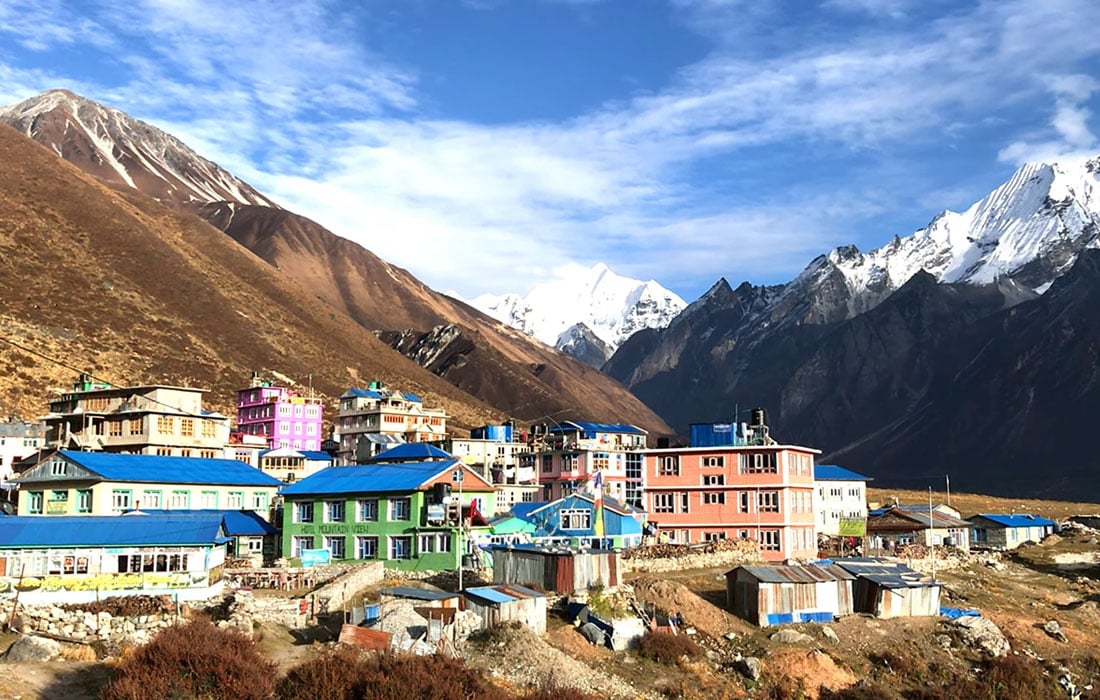










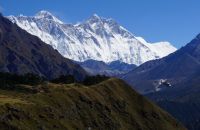
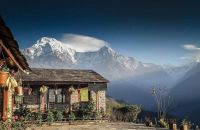
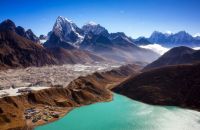
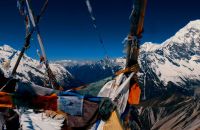
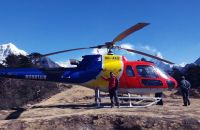
















Recent Comments
Hello Hayden, Yes, the trek can be wrapped up even in prices lower than you have mentioned above depending on your group size and standard of services you would pick from inclusions. You can kindly follow the link below just for an idea on services, trekking itinerary and the cost of Langtang Trip: https://www.thirdrockadventures.com/trip/langtang-valley-trek You can always discuss and plan the trip as per your requirements or preferences with out travel experts.
I believe there is very little chances of getting altitude sickness as the highest elevation during the trek is below 4000 meters. This makes the trek suitable for people who are prone to the Altitude Sickness. Very nice article.
The itinerary is shorter than other normal treks in Nepal and is feasible to anyone who are short in time. Despite the shorter days trek, the nature and adventure experiences looks rewarding. I would love to to do this trip.
After going through all the related notes about Langtang Trek, I figured out that we can go for this trek throughout the year. Can we actually do it all round the year?
Langtang region looks very interesting and unique to me. I would definitely visit this place some day very soon in future. Thanks for all those information.
Drinking water can be found in public taps and local spings as well. However, make sure to carry water purifying tablets and a bottle with you at all times. Avoid paying USD 1 to USD 2 for a half-liter mineral water bottle during the trek.- this sounds so handy and helpful. I never thought about this and from now will apply for every treks to Nepal. Thanks from my heart.